Commuting
07 December 2025
07 December 2025

This may very well be my ultimate dream
scenario: to temporarily disappear to get my act together, clean out my
closets, tackle this ‘paper’work nightmare, trade escapism for discipline,
practice, practice, practice, and resurface with a magnificent series of
photographs.
For you
21 November 2025
21 November 2025

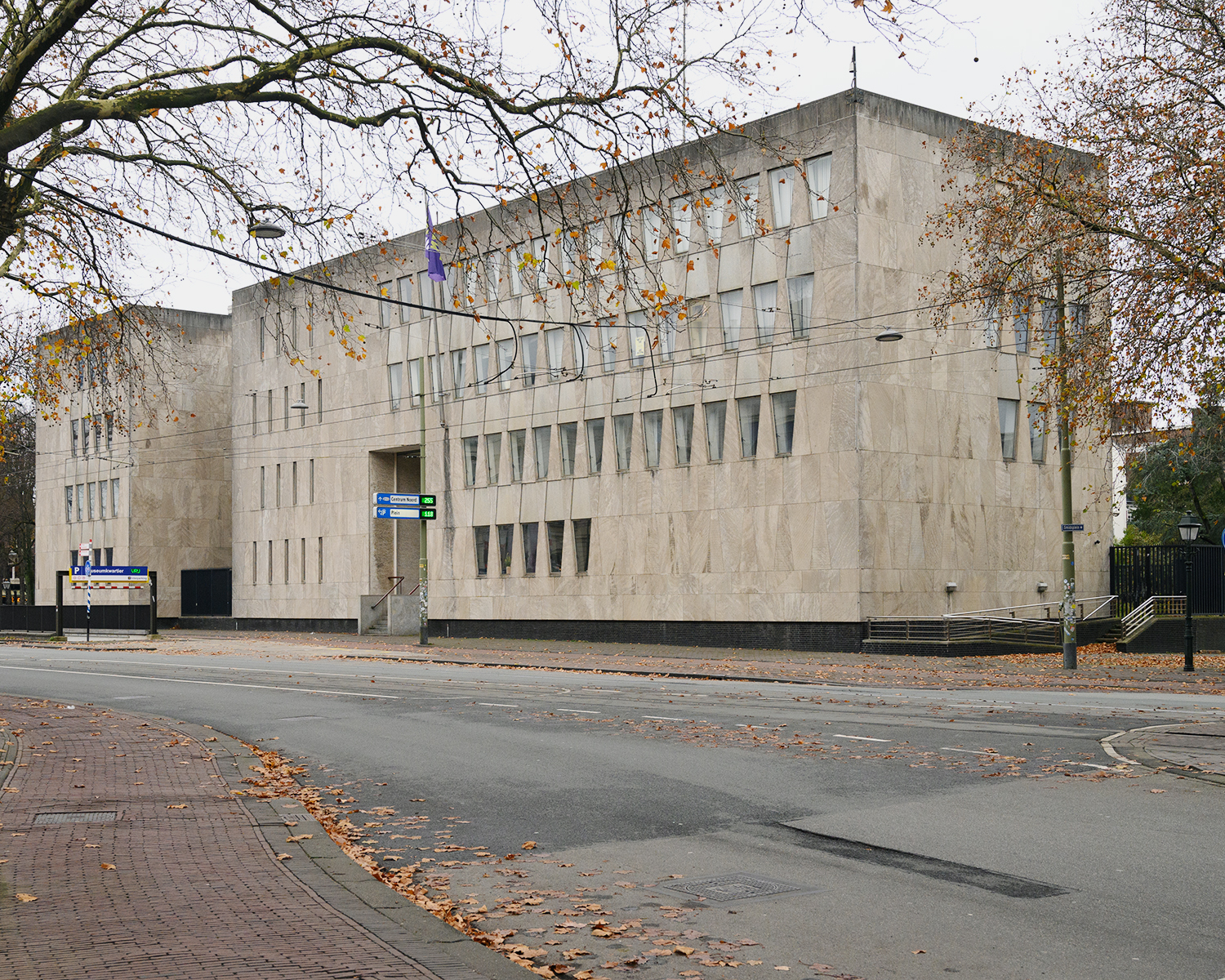
The
algorithm has zeroed in on me and is pelting me with posts from all sorts
of accounts that all look the same and always end with the line: if you’re
an introvert, this page is for you. Which I doubt.
It’s not that I don’t identify with the type, I easily do, and many of the traits listed on those pages are spot on. But at the same time—what a bland, syrupy and overly delicate picture they paint of me and my fellow introverts. As if we spend our days draped in soft beige knitwear, tucked under a blanket, journaling by dim light while “resetting and recharging” after the slightest interaction with the outside world. Staring through a fogged-up window, processing stimuli with gentle music in the background. Having to recover from every tiny disruption to our carefully cultivated routines. Maybe those pages are for me after all—to kick me out of the house.
Last Sunday I took the train to The Hague and photographed this building. Because last time the weather wasn’t cooperating and I left without any exterior shots. So now I’ve got photos of a beige building in grey, muted light, along an empty street. If you are an introvert, this post is for you.
It’s not that I don’t identify with the type, I easily do, and many of the traits listed on those pages are spot on. But at the same time—what a bland, syrupy and overly delicate picture they paint of me and my fellow introverts. As if we spend our days draped in soft beige knitwear, tucked under a blanket, journaling by dim light while “resetting and recharging” after the slightest interaction with the outside world. Staring through a fogged-up window, processing stimuli with gentle music in the background. Having to recover from every tiny disruption to our carefully cultivated routines. Maybe those pages are for me after all—to kick me out of the house.
Last Sunday I took the train to The Hague and photographed this building. Because last time the weather wasn’t cooperating and I left without any exterior shots. So now I’ve got photos of a beige building in grey, muted light, along an empty street. If you are an introvert, this post is for you.
The attic
28 August 2025
28 August 2025


So the institute acquired the archive of Aldo and Hannie van Eyck. Physically everything is still on site where it was created: in the former house and workplace of the architects, now home to their heirs. Historically it’s not an insignificant place. The garden in the cover photo of this book, Team 10 meetings, is theirs, and the very place where I had my sandwich for lunch yesterday. I went to the house because I thought we might need some pictures of the archive in situ, before it was transported to the depots in Rotterdam. When it’s gone it’s gone. Also, I was curious.
I would be photographing in the attic, while three of my colleagues prepared the inventory. And I would take pictures of them at work as well. I didn’t know what to expect from ‘the attic’. Dark probably. Cramped, cluttered. Difficult light distribution. I brought the tripod, but I didn’t know if there was enough space to unfold it. Besides, how useful is a tripod when photographing the dynamics of people at work? I wasn’t sure. I usually photograph things that do not move, or move very, very slowly, like buildings, landscapes and interiors. Occassionally a human being is present in the frame. But for this, I imagined something less static and distant. Not being a fly on the wall, but more or less present in the process, as far as that goes.
Unfortunately I didn’t get to see the house. J. photographed it earlier this year, including the models, and before the entire art collection was sold (I believe that eventually the house itself will be sold as well). But he never made it to the attic, which is in a separate building on the same property, and nothing special, apart from the fact that it houses the archive.
(︎︎︎ Some familiar seventies items made me smile: a brown version of the green Poulsen lamp hung over our dining table when I was a child. The Boby trolley, that was my mum’s, and I had this globe-like paper lamp in my bedroom, only smaller. Isamu Noguchi vs IKEA, I presume.)
For various reasons I felt a responsibility to do this right. I would not be able to do it again, nor would anyone else. Not everything worked out well, but I’m pleased with what did. The only silly thing is that I didn’t photograph the garden.
A selection of these photographs is here to see.
I would be photographing in the attic, while three of my colleagues prepared the inventory. And I would take pictures of them at work as well. I didn’t know what to expect from ‘the attic’. Dark probably. Cramped, cluttered. Difficult light distribution. I brought the tripod, but I didn’t know if there was enough space to unfold it. Besides, how useful is a tripod when photographing the dynamics of people at work? I wasn’t sure. I usually photograph things that do not move, or move very, very slowly, like buildings, landscapes and interiors. Occassionally a human being is present in the frame. But for this, I imagined something less static and distant. Not being a fly on the wall, but more or less present in the process, as far as that goes.
Unfortunately I didn’t get to see the house. J. photographed it earlier this year, including the models, and before the entire art collection was sold (I believe that eventually the house itself will be sold as well). But he never made it to the attic, which is in a separate building on the same property, and nothing special, apart from the fact that it houses the archive.
(︎︎︎ Some familiar seventies items made me smile: a brown version of the green Poulsen lamp hung over our dining table when I was a child. The Boby trolley, that was my mum’s, and I had this globe-like paper lamp in my bedroom, only smaller. Isamu Noguchi vs IKEA, I presume.)
For various reasons I felt a responsibility to do this right. I would not be able to do it again, nor would anyone else. Not everything worked out well, but I’m pleased with what did. The only silly thing is that I didn’t photograph the garden.
A selection of these photographs is here to see.
American Embassy
07 August 2025
07 August 2025

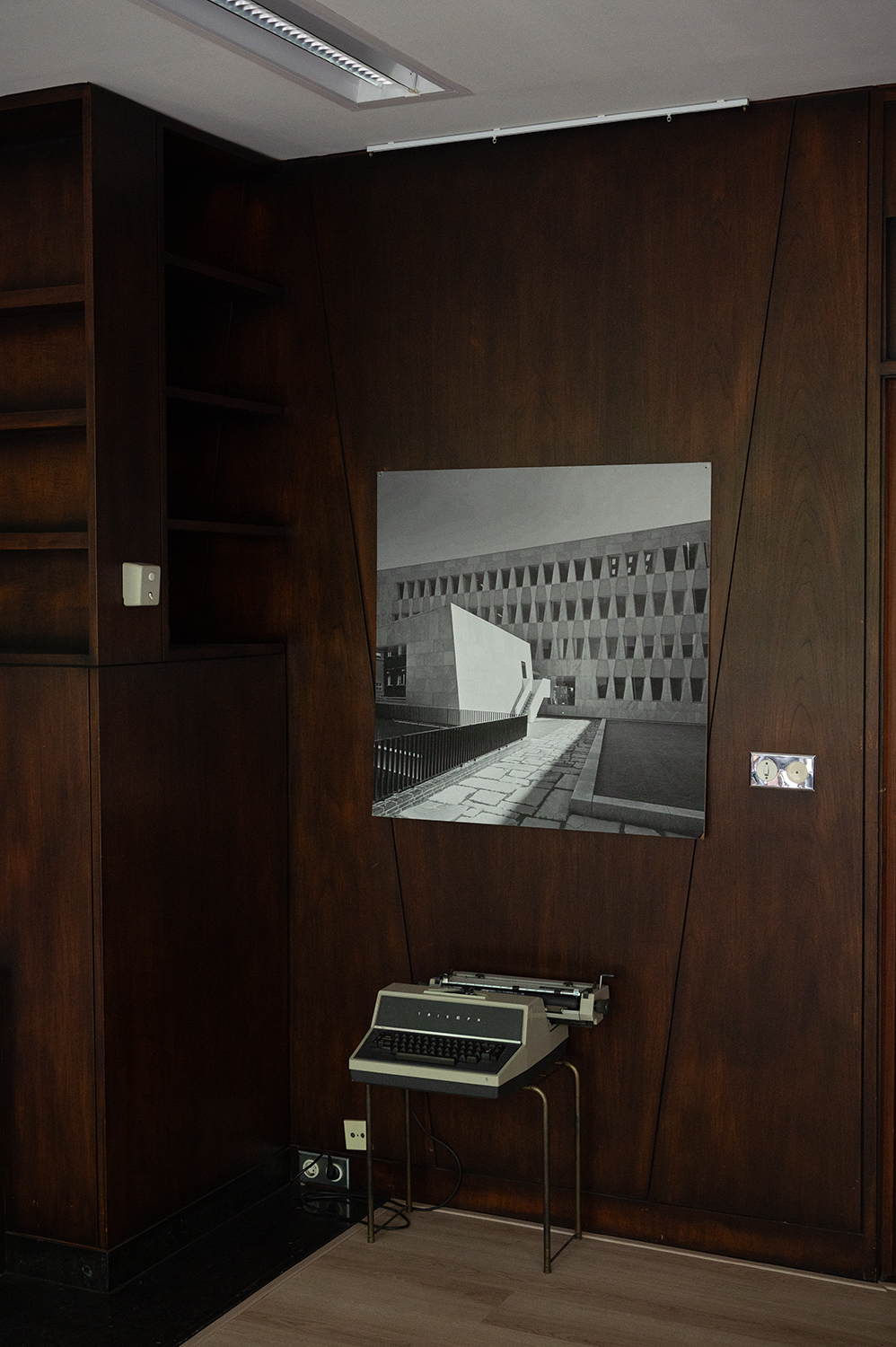
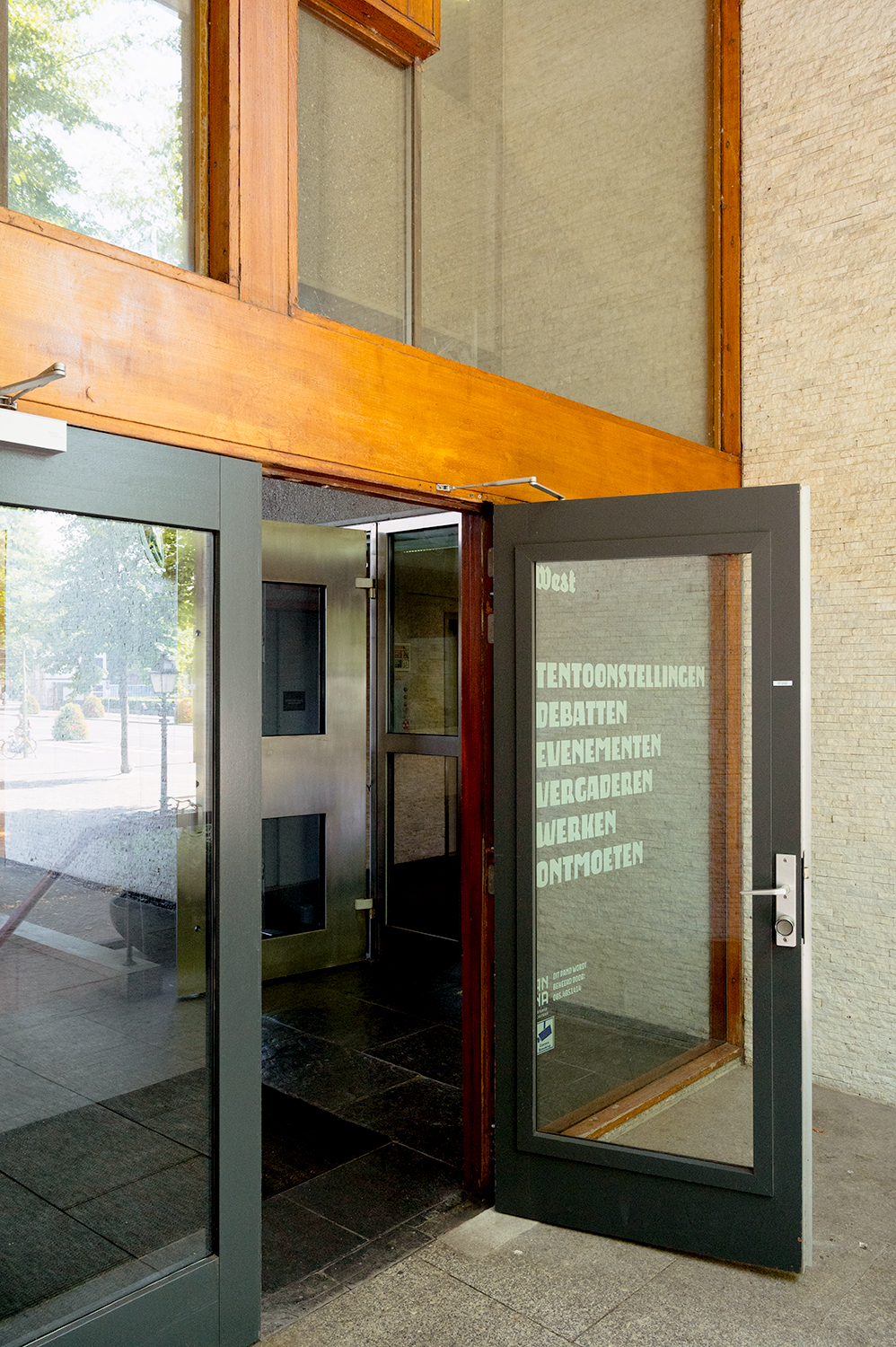
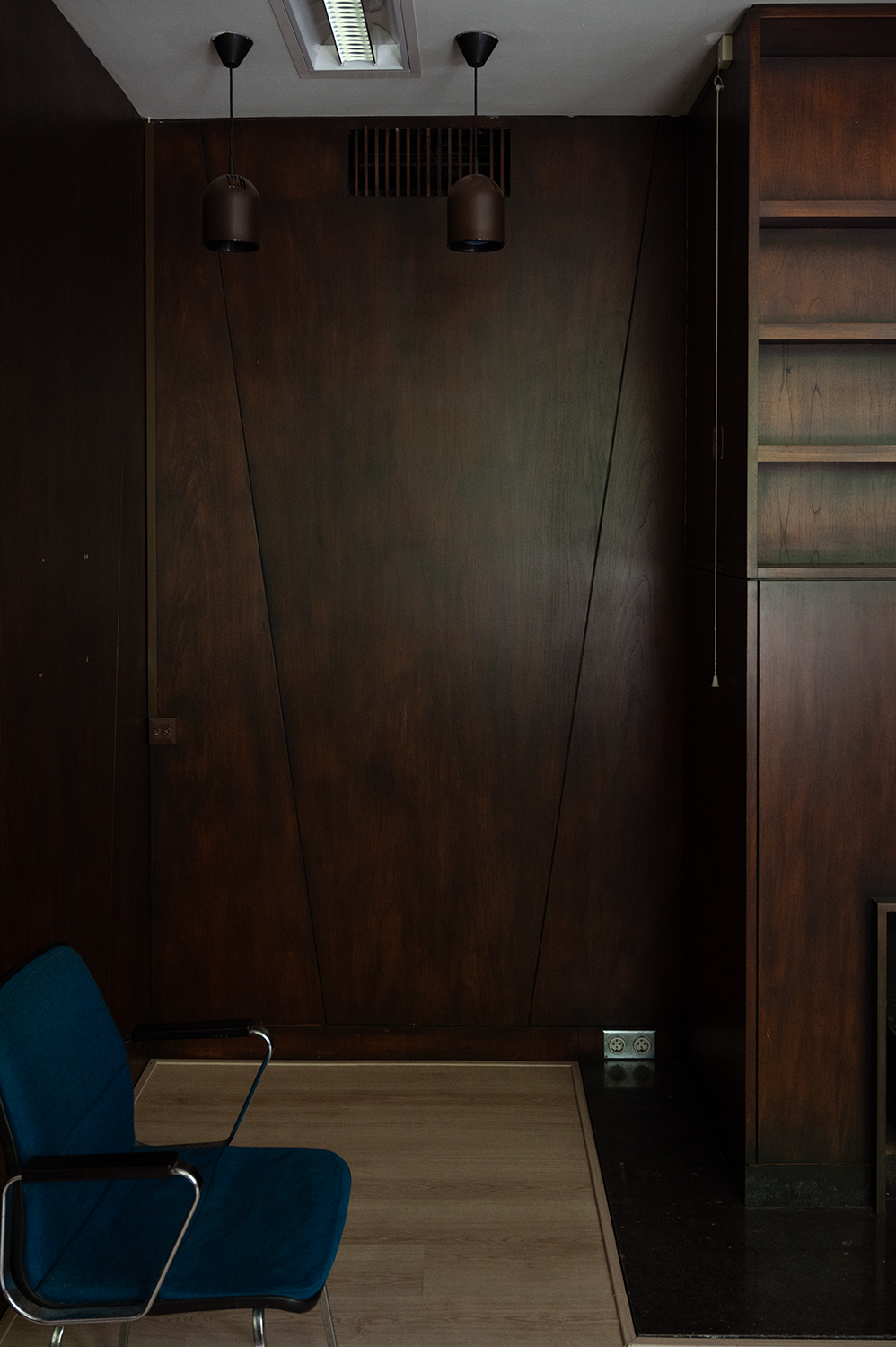
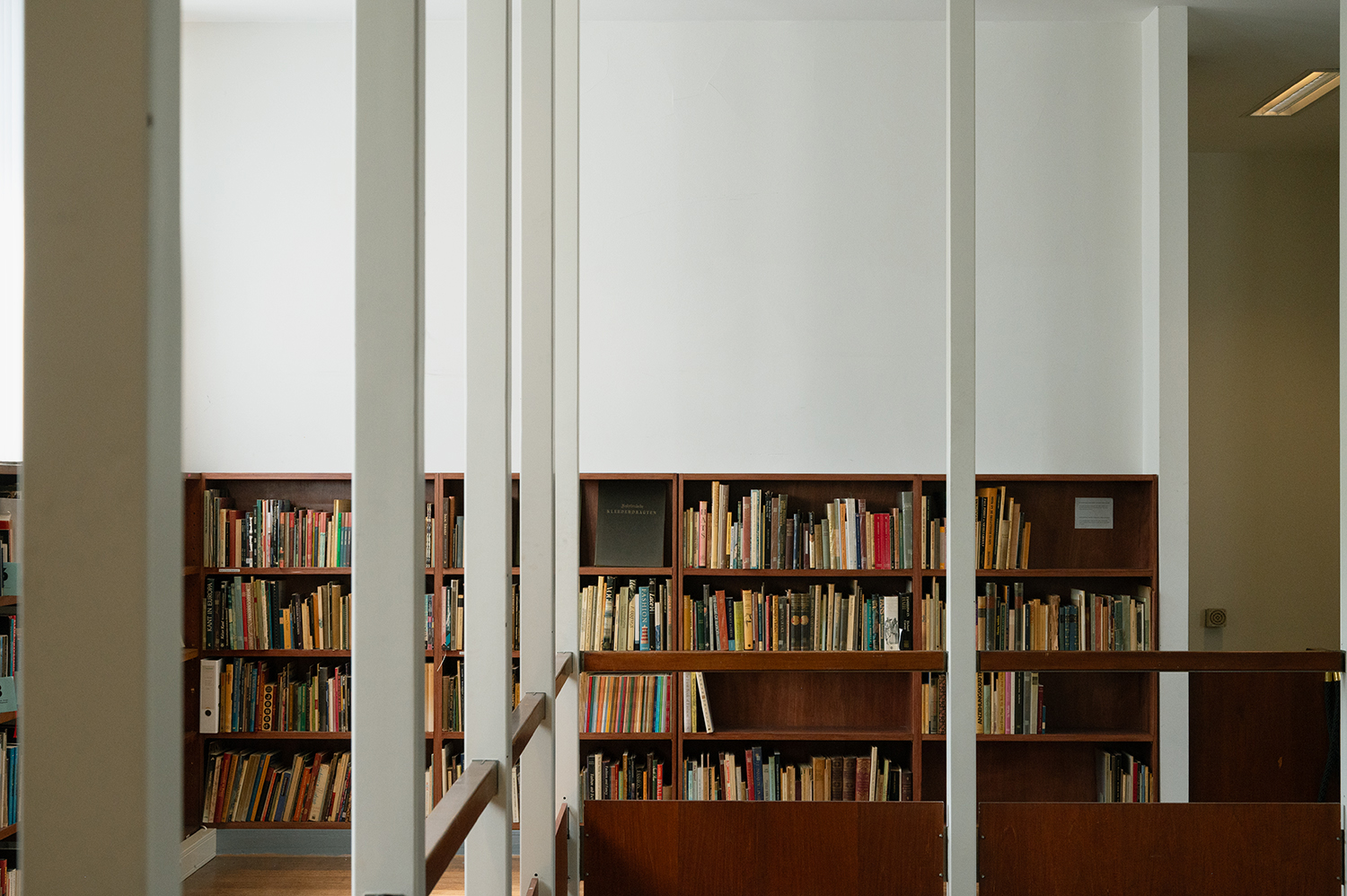
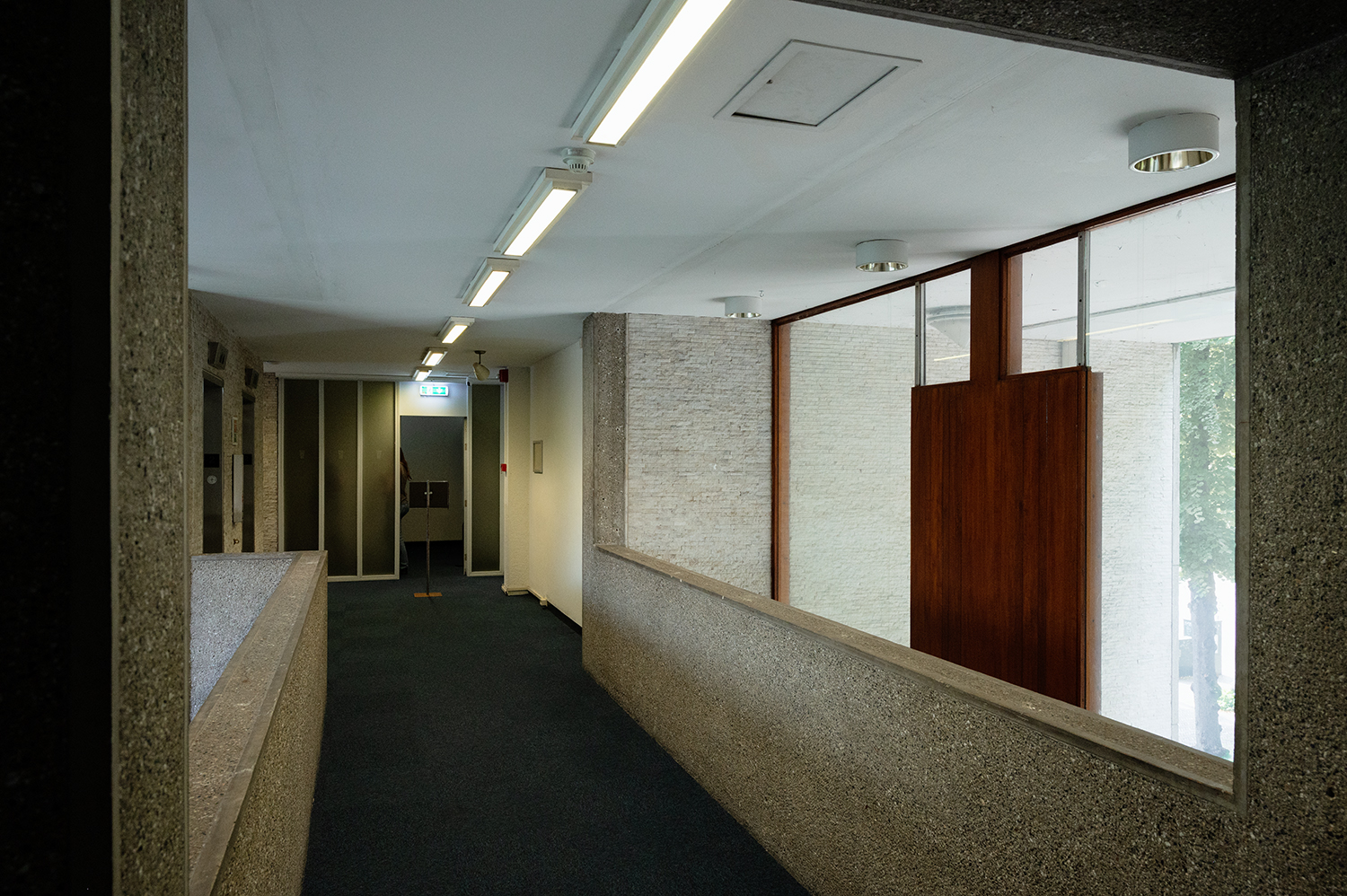
Former American Embassy, The Hague. Built in 1959. Architecture by Marcel Breuer.
Villaggio
29 May 2025
29 May 2025
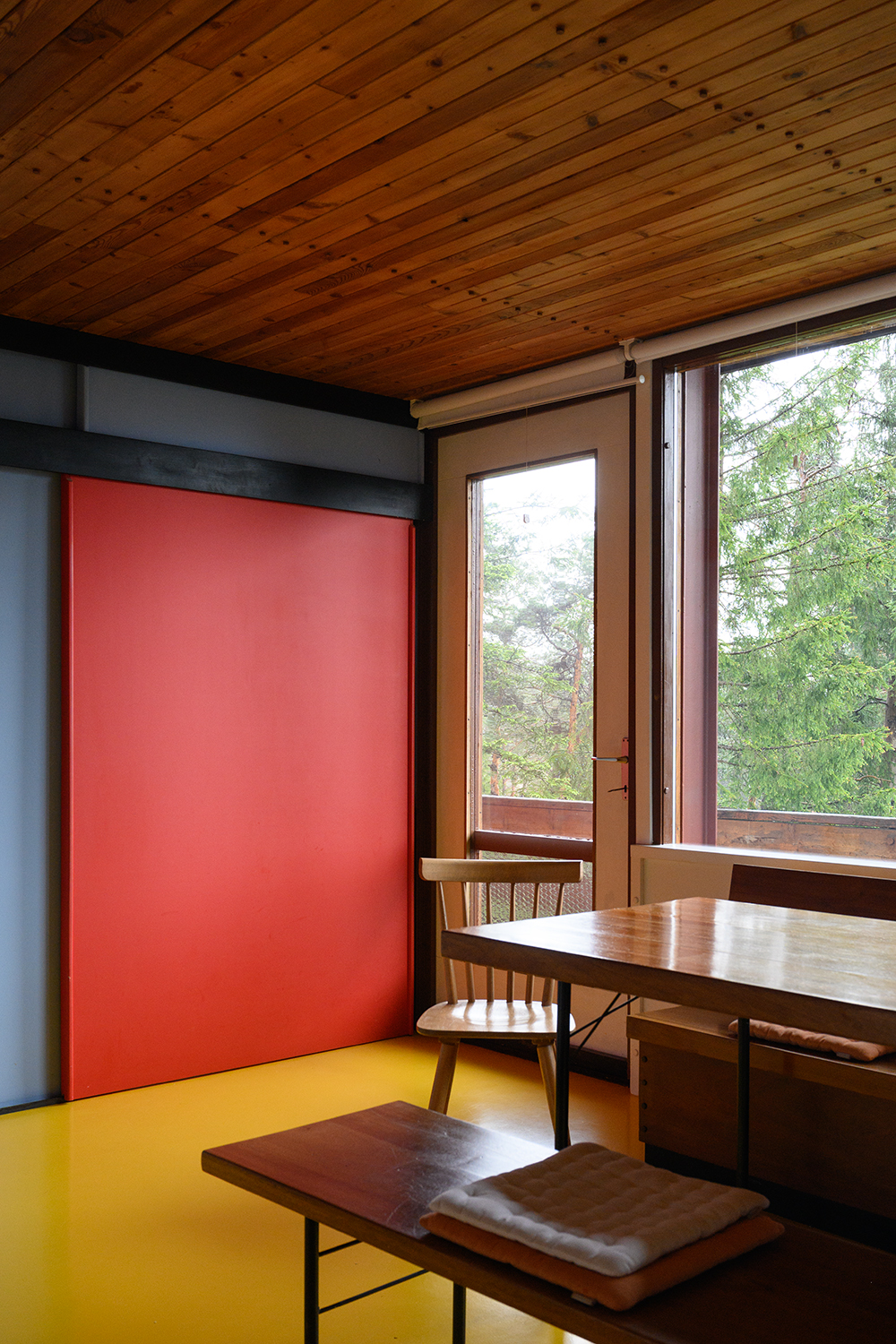

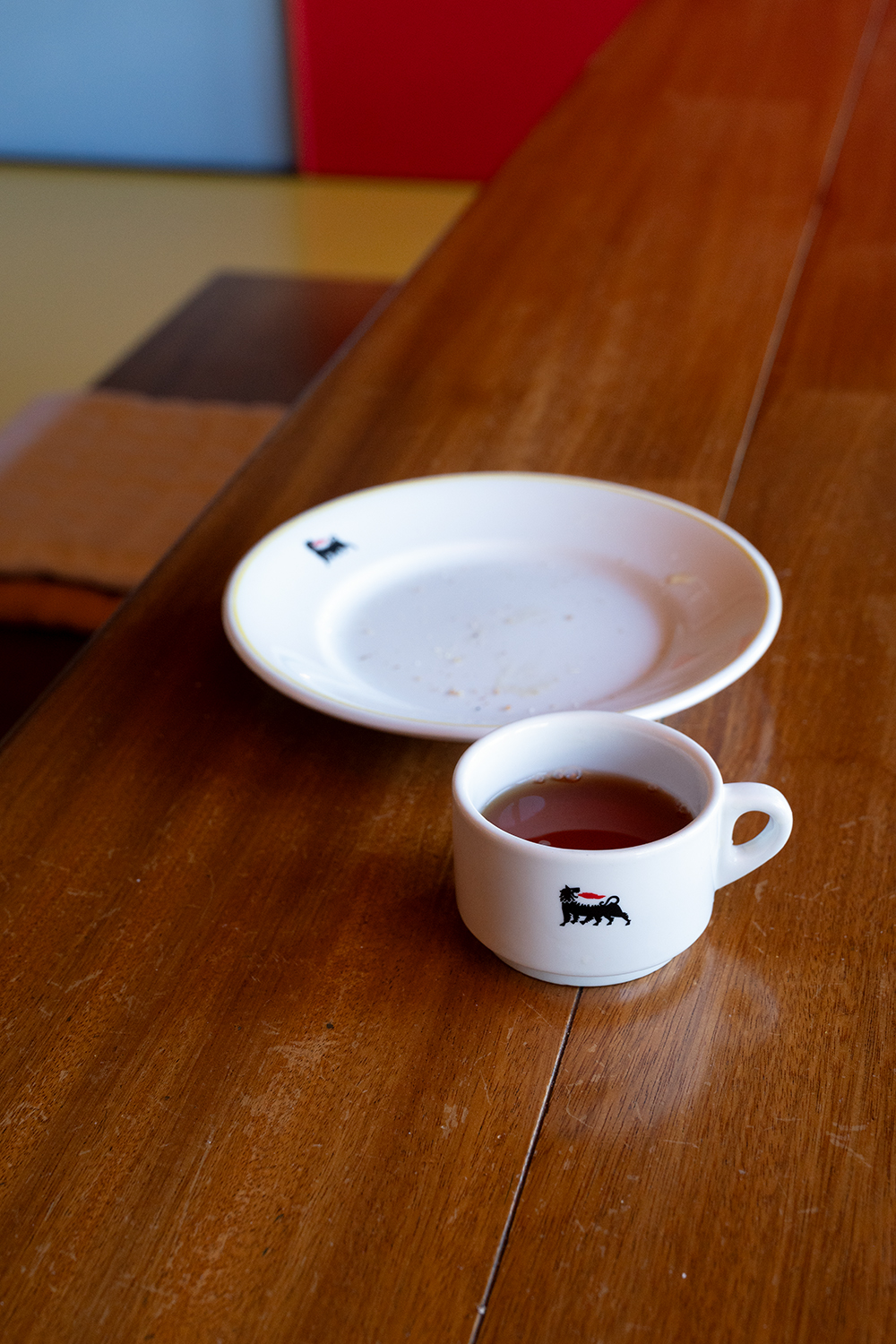

I spent a couple of summers in Sweden when I was a child. My dad worked for a Swedish company in the Netherlands. I don’t think they owned the holiday park where we stayed, but at least they reserved part of it for their employees. It must have been somewhere in the Stockholm archipelago, because I remember visiting the capital, and the park having small boats available to navigate the surrounding waters. It also had a tennis court, and best of all, a sort of community building where breakfast was served. Food that I’d never had before, and certainly not for breakfast, like smörrebröd and meatballs with blackberry marmalade, generously heaped on large plates.
I was thinking about this when I looked into the history of our temporary home in Borca di Cadore. Villaggio ENI was initiated by Enrico Mattei, the chairman of Italy’s largest oil company, and designed by architect Edoardo Gellner between 1954-1957. A holiday village offering a range of accommodation for ENI employees and sick staff who would benefit from the crisp mountain air. A socialist dream of community, connecting with nature and an architecture devoid of local folklore, in favour of raw concrete, glass and wood. Gellner also designed the villas’ interiors and furniture, using a colour palette of contrasting hues, such as yellow, blue and red, inspired by Californian modernist Richard Neutra.
I was thinking about this when I looked into the history of our temporary home in Borca di Cadore. Villaggio ENI was initiated by Enrico Mattei, the chairman of Italy’s largest oil company, and designed by architect Edoardo Gellner between 1954-1957. A holiday village offering a range of accommodation for ENI employees and sick staff who would benefit from the crisp mountain air. A socialist dream of community, connecting with nature and an architecture devoid of local folklore, in favour of raw concrete, glass and wood. Gellner also designed the villas’ interiors and furniture, using a colour palette of contrasting hues, such as yellow, blue and red, inspired by Californian modernist Richard Neutra.
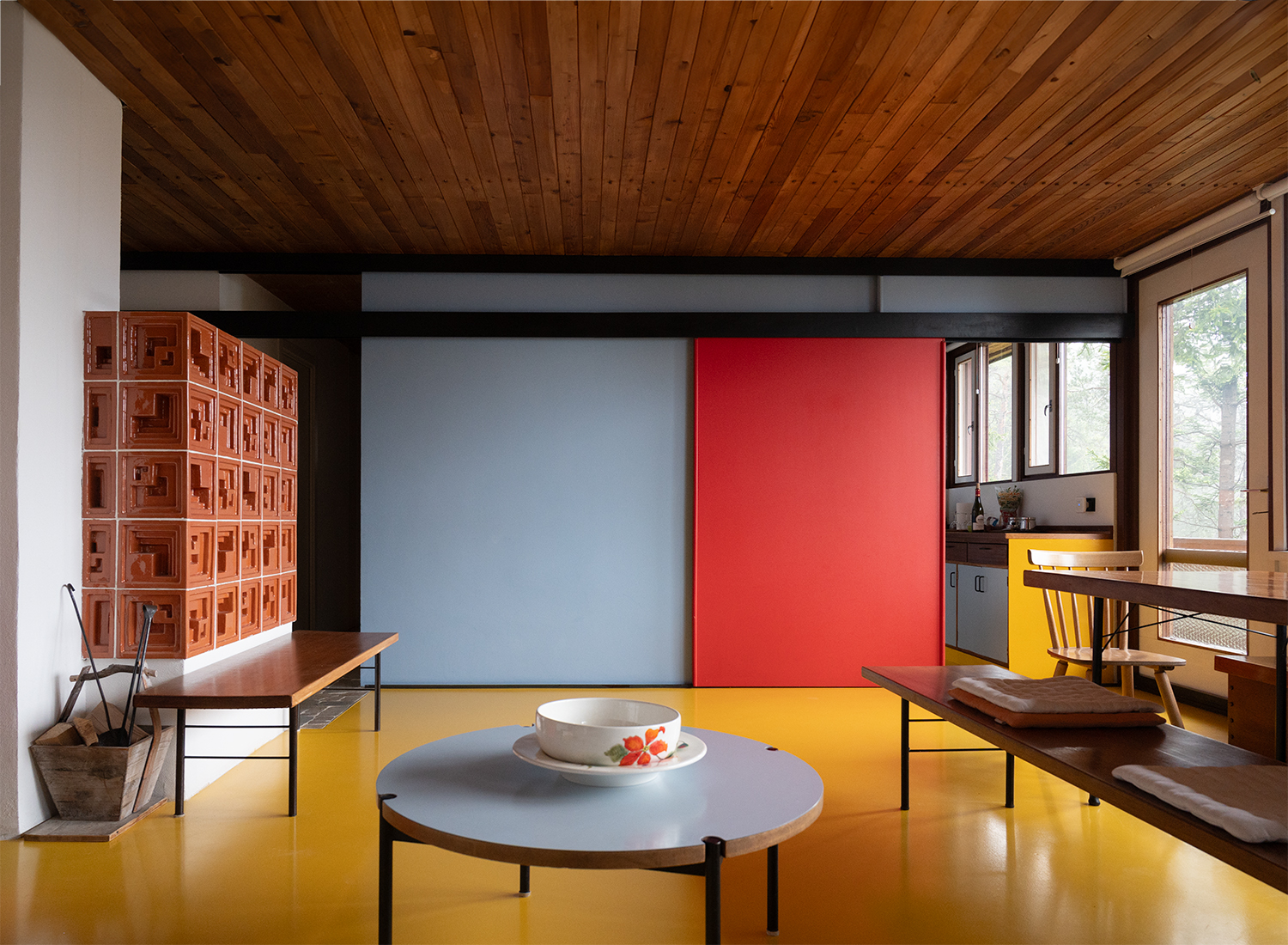
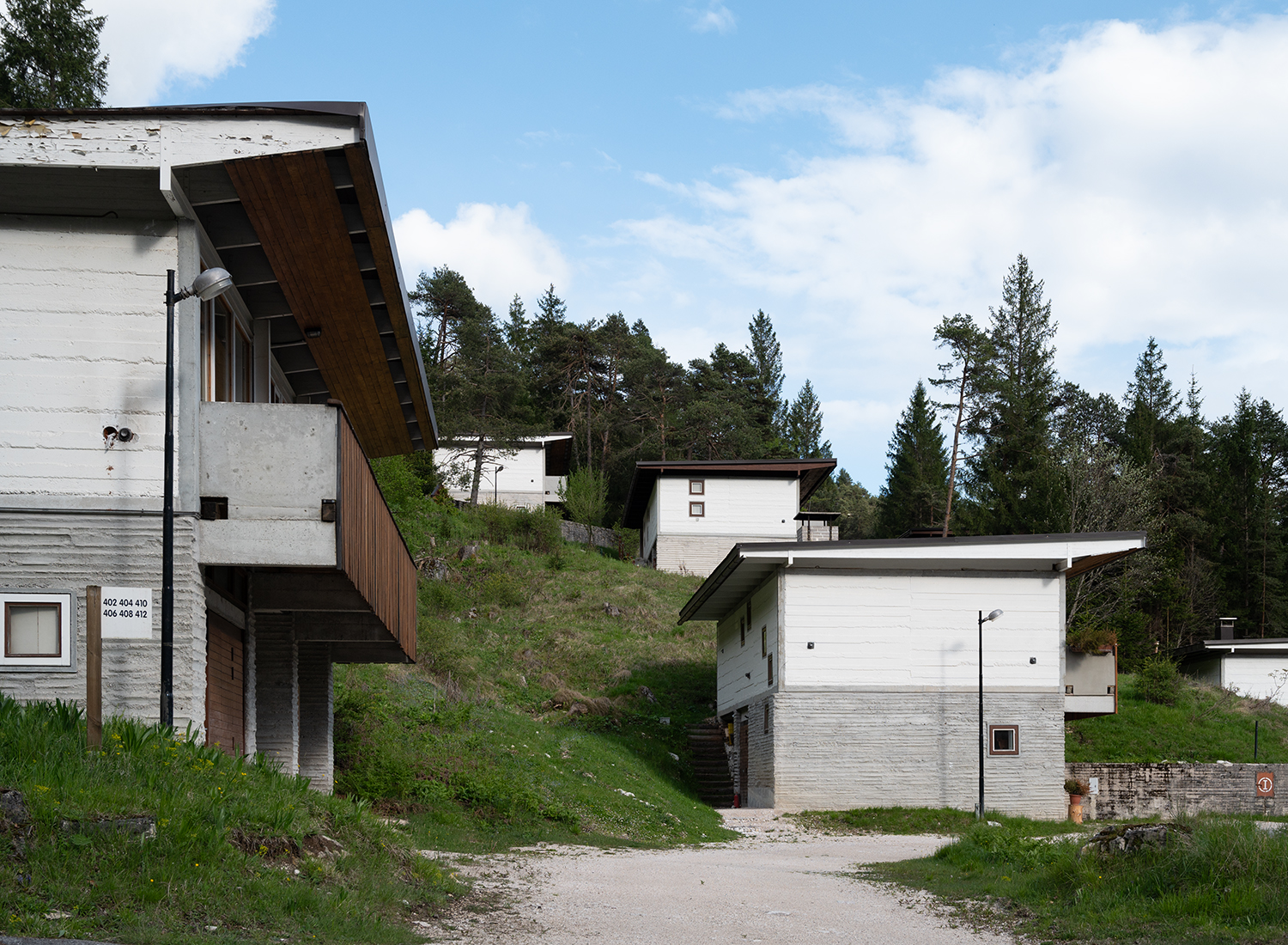

It's not quite clear how much of the interior of our home was original. Photos suggest that two adjacent rooms had been
joined together and that the kitchen door had been replaced with a sliding door. Most of the furniture appeared to be original, with some pieces bearing name tags and serial numbers. In one of the kitchen cupboards I found piles of dinner plates and cups with a logo that I recognised as the Agip petrol station logo, and we joked that the landlord got his crockery by saving stamps.
Agip was a product of the Italian fascist regime. After the Second World War, Mattei was appointed to oversee the dismantling of Agip, but rather than abolishing it, he transformed it in terms of content, structure and ideology. Under the umbrella of ENI, which was founded in 1953, he turned Agip into a cornerstone of a modern, independent Italian energy empire with a strong social agenda. The famous six-legged, fire-breathing dog logo was designed in 1952, after the fascist period. Retaining the Agip logo despite the company’s origins can be understood as an example of strategic rebranding and cultural reappropriation. It decorated vases, plates and cups, custom-designed by Gellner himself.
Mattei's death in a plane crash in 1962 marked the end of his ambitious utopia. Although the village was never completed, the existing buildings continued to accommodate guests until 1992. The following years were marked by neglect and decay until, in 2000, the entire structure was sold to a Sardinian company. This marked the beginning of a slow ascent. In 2014, Progettoborca was established to introduce new ideas and initiatives to breathe new life into the property. Exploring the area, we saw reconstruction work taking place at the hotel and spa. The ‘colony’, which could accommodate 600 children, is now a gated construction site and an artists' and architects' residence, with tours every now and then. But a full-fledged renovation doesn’t seem to be happening. Perhaps the 2026 Winter Olympics in Cortina, only 15 miles away, will provide the incentive needed to change that.
Agip was a product of the Italian fascist regime. After the Second World War, Mattei was appointed to oversee the dismantling of Agip, but rather than abolishing it, he transformed it in terms of content, structure and ideology. Under the umbrella of ENI, which was founded in 1953, he turned Agip into a cornerstone of a modern, independent Italian energy empire with a strong social agenda. The famous six-legged, fire-breathing dog logo was designed in 1952, after the fascist period. Retaining the Agip logo despite the company’s origins can be understood as an example of strategic rebranding and cultural reappropriation. It decorated vases, plates and cups, custom-designed by Gellner himself.
Mattei's death in a plane crash in 1962 marked the end of his ambitious utopia. Although the village was never completed, the existing buildings continued to accommodate guests until 1992. The following years were marked by neglect and decay until, in 2000, the entire structure was sold to a Sardinian company. This marked the beginning of a slow ascent. In 2014, Progettoborca was established to introduce new ideas and initiatives to breathe new life into the property. Exploring the area, we saw reconstruction work taking place at the hotel and spa. The ‘colony’, which could accommodate 600 children, is now a gated construction site and an artists' and architects' residence, with tours every now and then. But a full-fledged renovation doesn’t seem to be happening. Perhaps the 2026 Winter Olympics in Cortina, only 15 miles away, will provide the incentive needed to change that.